In the rapidly evolving landscape of industrial equipment, the demand for high-quality Mx Series machinery has surged due to its unparalleled performance and versatility across various applications. According to the latest industry report by Technavio, the global industrial equipment market is expected to reach a staggering $620 billion by 2025, fueled by advancements in automation and increasing demand for energy-efficient solutions. The Mx Series stands out with its innovative design and robust features, making it suitable for diverse sectors, including manufacturing, construction, and automotive. Understanding the unique characteristics and applicable ranges of different Mx Series products is crucial for sourcing the best equipment worldwide, ensuring that businesses harness the full potential of their investments and maintain a competitive edge in the market.

When sourcing the best Mx Series equipment worldwide, identifying top manufacturers across the globe is crucial for ensuring quality, innovation, and reliability. As businesses strive to enhance their operational capabilities, the focus must be on suppliers who not only provide state-of-the-art technology but also understand the nuances of local and international markets. By engaging with manufacturers who possess a proven track record in producing Mx Series equipment, companies can mitigate risks associated with subpar products and unreliable sourcing practices.
Moreover, as global supply chains evolve post-pandemic, manufacturers are increasingly prioritizing digital strategies that empower their operations. This transformation not only improves efficiency but also enhances the ability to respond to market demands swiftly. Manufacturers developing innovative approaches and leveraging advanced technologies will be better positioned to lead in the Mx Series sector. Continuous investment in research and development is key to staying competitive and meeting the diverse needs of clients worldwide, ultimately driving growth and success in the industry.

When sourcing the best Mx Series equipment worldwide, understanding quality standards and certifications is crucial. These benchmarks serve as a guarantee of performance, safety, and reliability. Initially, manufacturers should adhere to international standards like ISO (International Organization for Standardization) and ASTM (American Society for Testing and Materials), as these organizations set forth rigorous testing protocols and quality management systems. Such certifications not only depict a manufacturer's commitment to quality but also provide assurance that the equipment meets industry-specific needs.
Moreover, look for equipment that has been certified by organizations pertinent to the specific sector, such as CE marking in Europe or UL certification in North America. These certifications demonstrate compliance with safety and environmental regulations, ensuring that the equipment not only performs efficiently but also adheres to legal requirements. Additional certifications focusing on sustainability and eco-friendliness are increasingly essential, reflecting the industry's movement towards greener practices. By prioritizing certified Mx Series equipment, businesses can make informed decisions that enhance credibility and operational efficiency.
When sourcing the best MX Series equipment worldwide, one pivotal aspect that often gets overlooked is after-sales support. It’s not just about selecting the equipment that serves your immediate needs; understanding the comprehensive support system available post-purchase can profoundly impact your long-term success. Effective after-sales support ensures that any issues you encounter can be addressed promptly, minimizing downtime and enhancing productivity.
Furthermore, a robust after-sales support team can provide valuable training and resources, empowering your staff to utilize the equipment to its fullest potential. This ongoing relationship can lead to continuous improvements and innovations, as manufacturers gain insights from user experiences. Investing in equipment is not merely a one-time transaction; it’s a partnership that flourishes with reliable after-sales service, ultimately driving greater operational efficiencies and cost savings for your business.

Negotiating the best prices on Mx Series equipment requires a strategic approach, especially given the competitive nature of the industry. According to a recent report from Industry Research, the global Mx Series equipment market is projected to reach $5 billion by 2025, showing an annual growth rate of around 8%. This growth presents both opportunities and challenges for buyers looking to source high-quality equipment at competitive prices.
When entering negotiations, it's essential to leverage market insights and benchmarks. For instance, understanding the average price range for Mx Series equipment can help set realistic expectations. A 2023 survey by Equipment Metrics found that 75% of companies successfully reduced their procurement costs by 10% or more by conducting thorough market research beforehand. Additionally, having multiple suppliers can create a competitive bidding environment, pushing prices down and ensuring you secure the best deal available.
Furthermore, don't overlook the importance of building strong relationships with suppliers. A report by Supply Chain Insights revealed that 60% of successful negotiations stemmed from established trust and transparency between parties. Prioritize open communication, and consider long-term partnerships, as this often leads to better pricing and support in future transactions. By incorporating these tactics, buyers can enhance their negotiation strategies and achieve significant cost savings on Mx Series equipment.
When it comes to sourcing Mx Series equipment, online marketplaces and trade shows emerge as two of the most effective platforms for both buyers and suppliers. Online marketplaces, such as Alibaba, eBay, and specialized industrial platforms, provide an extensive selection of products from manufacturers around the globe. These platforms not only enable easy comparison of prices and features but also offer customer reviews that can help inform purchasing decisions. By utilizing filters for specifications and geographical preferences, sourcing professionals can quickly identify the best options that meet their needs.
On the other hand, trade shows present unique opportunities to form valuable connections and gain firsthand experience with potential equipment. Events like the National Manufacturing Week or regional expos allow attendees to engage directly with vendors, ask pertinent questions, and even see equipment demonstrations. This tactile approach to sourcing empowers buyers to make informed decisions based on the performance and quality of the equipment. Additionally, trade shows often feature networking opportunities that can lead to long-term partnerships and insider knowledge on upcoming trends in the Mx Series market. Combining these strategies can greatly enhance the efficiency and effectiveness of equipment sourcing efforts.


